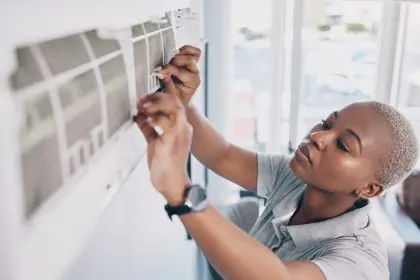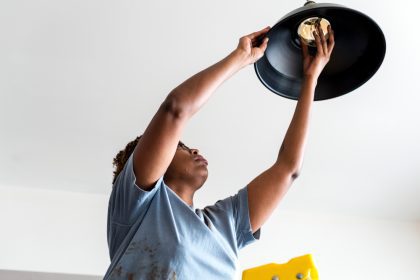When it comes to managing household expenses, most people think about the big-ticket items—mortgage rates, appliance efficiency or insulation quality. But one subtle factor might be silently driving up your utility bills every month: the direction your home faces.
Something as simple as the orientation of your house can affect how much sunlight it absorbs, how hard your air conditioning or heating systems have to work, and ultimately, how high your energy bills climb.
Sun exposure impacts temperature
One of the primary ways a home’s orientation affects expenses is through sunlight exposure. In the Northern Hemisphere, homes that face south tend to receive the most consistent natural light throughout the day. This can be a blessing during winter, as it allows more warmth to naturally heat the home, reducing reliance on heaters.
On the other hand, a west-facing house might trap intense heat in the late afternoon and evening during summer, causing air conditioning systems to work overtime. That spike in usage not only raises electricity costs but can also wear down HVAC equipment faster than expected.
For east-facing homes, the morning sun can quickly warm bedrooms or living rooms. If you’re someone who sleeps late or works night shifts, the early light may not only interrupt your sleep but also trigger earlier use of cooling appliances.
The simple rotation of a home—its angle in relation to the sun—can drastically change the amount of heating and cooling it needs.
The cost of comfort
Everyone wants a comfortable living space, but few realize that comfort comes with a cost tied to sunlight and airflow. A poorly oriented home may require constant adjustments to the thermostat, meaning higher use of electricity or gas.
Windows that face west or south without proper shading may lead to unwanted solar gain in summer, leading to higher indoor temperatures and an ongoing cycle of cooling. Homes that face north, by contrast, tend to be darker and cooler. While this might be helpful in hot climates, it can lead to chilly interiors in winter months and higher heating bills.
In essence, comfort in a home doesn’t just depend on your thermostat settings. It depends on how efficiently your home works with nature—or against it.
Why builders overlook orientation
Many homes in urban and suburban developments are built with uniformity in mind. Efficiency in construction, ease of access to roads, and maximizing land usage often take priority over optimal home orientation. This means entire neighborhoods could be filled with houses that are beautiful to look at but expensive to live in due to inefficient exposure to the elements.
Additionally, some builders may not consider how climate differs regionally. A house plan designed for Michigan might be replicated in Arizona, even though the demands on energy and sun exposure are completely different.
Landscaping’s role
Beyond the walls of your home, the outdoor layout can either complement or exacerbate the challenges caused by poor orientation. Trees, shrubs, awnings and reflective surfaces all play a role in how much heat and light a house absorbs.
Planting deciduous trees (those that shed leaves in winter) on the south or west side of a home can provide shade in summer while allowing light to warm the home during colder months. Pergolas, tinted windows or strategically placed fencing can also contribute to better energy management.
Poor landscaping choices, such as blacktop driveways near west-facing windows or lack of shade entirely, can worsen thermal build-up and force your systems to work harder.
Beyond energy costs
While energy bills are the most direct financial result of home orientation, there are other subtle ways your wallet can be affected. For instance, home insurance rates may fluctuate slightly based on climate exposure. A home that constantly faces high winds or sun exposure might be more vulnerable to damage, increasing premiums.
Furthermore, resale value could take a hit. More eco-conscious buyers are factoring in solar compatibility, natural lighting and heating efficiency. A poorly oriented home could be harder to sell or may require upgrades to attract buyers.
Smart design solutions
Even if your home wasn’t built with optimal direction in mind, there are ways to compensate:
- Smart home systems that adjust blinds based on sunlight
- Improved insulation and reflective roofing materials
- Window films and double-glazing to reduce incoming sunlight intensity
- Ceiling fans to circulate air more efficiently
- Thermal curtains and reflective window panels
These upgrades can turn a problematic home orientation into a manageable one—though they come with upfront costs that may not be affordable for every household.
Climate zones matter
The impact of home orientation is not the same everywhere. In the southern United States, sun exposure can be relentless for much of the year, making cooling costs a major concern. Conversely, homes in colder northern climates might welcome every ray of warmth they can get to offset heating needs.
In coastal or mountainous regions, wind patterns and elevation play a role. A home facing into the wind may suffer more draft problems and require additional sealing or insulation work.
New builds and future planning
If you’re building a new home, paying attention to which direction it faces is one of the best investments you can make. Working with architects who consider passive solar design and airflow can help you reduce long-term energy consumption.
Even simple layout decisions—like placing bedrooms on the cooler side of the house or having overhangs that block high summer sun but allow low winter light—can make a significant difference in monthly expenses.
While most homeowners stress over interest rates or square footage, the true cost of a home can sometimes be found in the way it meets the morning sun or shields against the evening heat. Being informed about your home’s orientation offers more than energy savings—it provides the clarity to make meaningful adjustments that protect your wallet and enhance your comfort.


















